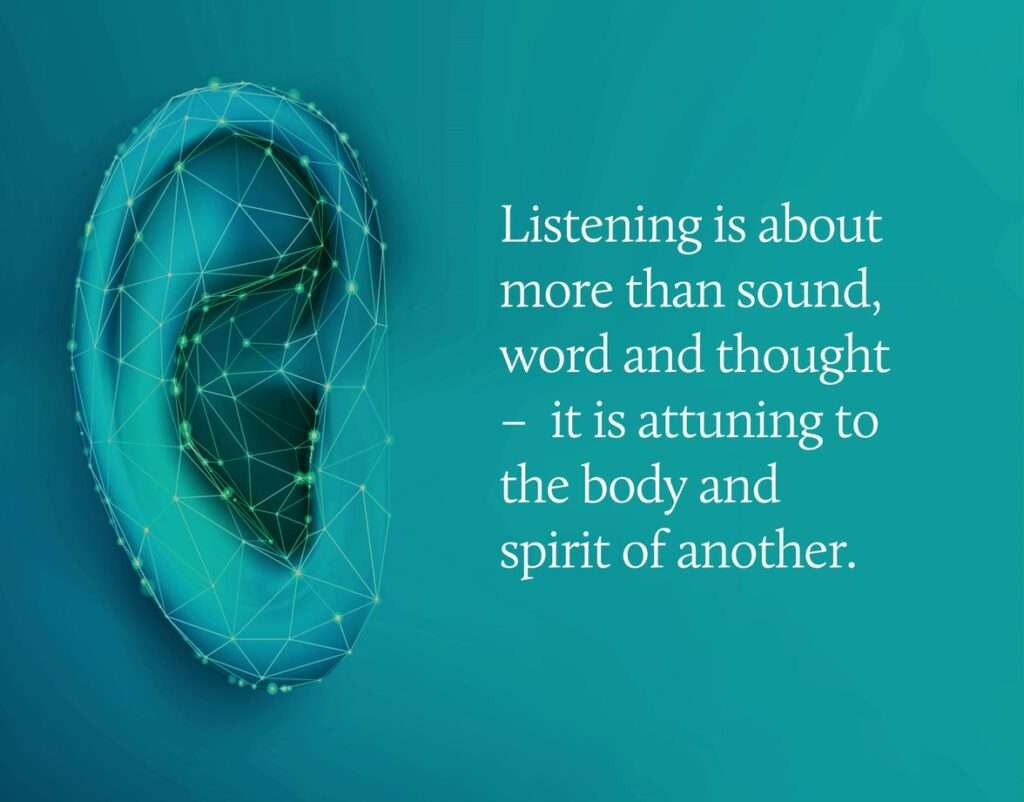services

Counselling, Somatic Therapy, and Art Therapy
At Resonance Somatic Therapy we meet you where you are. We trust that everyone has the innate capacity for trauma healing, for connection, and to find deeper congruence in body and spirit, relationships and life. Attuning to and trusting the wisdom of the whole person, including the body, is the essence of healing in both somatic therapy and art therapy.
All therapeutic relationships involve verbal communication. We also attune to the nervous system whose language encompasses the felt sense of embodiment– tingling, heat, cold, constriction, expansion, the rhythms of breath, movement, and the heart, and more. Polyvagal theory informs this listening. To read more about Polyvagal Theory check out this Blog post.

Getting Curious about Embodiment
Embodied experiences often fly below the radar of our conscious awareness. It can be empowering to understand and explore how cultural norms and early programming and relationships influence our experiences, and sometimes limit our capacity to live life fully.
Whether through narrative dynamics, creative or artistic means, movement, or body-centered exploration and support, we value all of the layers of experience, including culture and identity.
Somatic Experiencing™, NeuroAffective Touch™ and Art Therapy are some of the healing modalities we offer our clients. Polyvagal theory informs these therapies.
Neuroscience-Based Approaches

Somatic Experiencing®
The Somatic Experiencing® (SE™) approach was developed by Peter A. Levine. The SE™ psychobiological approach to trauma resolution is a way of working experientially with clients through “stuck” fight, flight and freeze responses that remain incomplete after stressful or traumatic experiences. Completing these response patterns leads to a greater capacity in life and increased sense of well-being. This hopeful approach makes it possible to become more available to connect to self and others. Even though SE™ often focuses on resolving issues of trauma, it is also an effective way of expanding our capacity to authentically live in the world, physically, psychologically, and spiritually.

NeuroAffective Touch™
NeuroAffective Touch™ is an innovative therapeutic approach that bridges psychodynamic, developmental, and body-centered modalities. Based on current neurobiological understanding, NeuroAffective Touch™ offers a vital bridge between our verbal and nonverbal selves.
NeuroAffective Touch™ can be done sitting or leaning into a chair or a couch, in person or through telehealth. It involves self touch, experiential anatomy, and touch from a trained practitioner. In person sessions are often done on a massage table. The client is always fully clothed. With pillows and soft supports, the body can settle in a way that nurtures a sense of safety. Warm pillows and gentle touch are used to calm, bring awareness and attunement to the body’s systems. Words and quiet conversation support the process of bringing awareness to and renegotiating holding patterns. This process can touch into early traumatic imprinting and allow the nervous system to receive input that was needed but never received.
As a person experiences this support through the body they are able to make new meanings, and experience profound support and relaxation. Through NeuroAffective Touch™ the parasympathetic nervous system can regain function and balance rather than being stuck in an over-reactive pattern.

Art Therapy
In Art Therapy drawing, painting, sculpture, and other forms of art and creativity are integrated in the process of therapy. Engaging in the creative process with a skilled companion- your therapist- addresses mental health and psychological distress, and physical and emotional well-being. Art therapy offers ways for clients to organize organization their experience of self, and promotes a sense of agency. In this process, art is more than a tool, it is a path to healing.
Symptoms treated are – anxiety, depression, substance abuse and other addictions, family and relationship issues, emotional dysregulation, healing from intimate partner abuse, social and emotional challenges related to disability and illness, communication challenges, physical, cognitive, and neurological problems.



